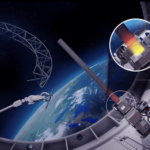This posting is Part 2 of my conversations with Michael Patterson, a retired engineer, who I met along with his wife and daughter while vacationing in Exuma. Michael has been a consulting environmental engineer since 1982. He is a graduate of Penn State University.
In this Q&A, Michael poses and answers more questions about climate change. As always your comments and questions are welcome.
Q: At present, how much of global energy consumption involves burning fossil carbon to produce heat?
A: Approximately 80%. Coal and natural gas power plants convert heat energy to electricity.
Q: What other ways do we generate power?
A: The remaining power we produce comes from hydroelectric power sites, nuclear power plants, solar arrays, wind turbines, and to a lesser extent from geothermal and tide sources.
Q: What is power?
A: Power refers to energy flows coming from electricity generators and the burning of fossil carbon in furnaces, industrial manufacturing processes, and for transportation.
Q: What has been the result of burning fossil carbon?
A: Rising atmospheric temperatures as described in Part 1 of this two-part series.
Q: What is the reason why so many Americans are not concerned about global warming?
A: American leadership from the Oval Office to Congress and state governments are not discouraging the burning of gasoline, diesel, and natural gas.
Q: Who are the biggest global emitters of carbon dioxide (CO2)?
A: China = 30%, United States = 11%, India = 8%.
Q: Why can’t these nations commit to a common strategy?
A: They do not have the same populations to feed and look after. A quick comparison shows that China has a population of 1.408 billion and a GDP per capita of $13,870 US. India has 1.425 billion and a GDP per capita of $2,940. The United States has 343 million and a GDP per capita of $89,680.
Q: Will removal of CO2 from the Troposphere result in cooler global surfaces?
A: Yes, but this will require the removal of about 20% to produce significant cooling.
Q: What is the total weight of CO2 in the Troposphere?
A: 3,300 metric gigatons.
Q: How much needs to be removed to cool to the mean global temperature in 1990?
A: 660 metric gigatons.
Q: How much CO2 can new experimental carbon capture and sequestration (CCS) technologies remove?
A: 13 metric gigatons per year.
Q: What area of land is needed for significant CO2 removal by planting trees?
A: An area equivalent in size to the United States and Canada.
Q: How long will it take to plant these trees and ensure they survive?
A: At least one hundred years.
Q: Will new trees we plant to naturally remove CO2 take up land currently being used to grow food?
A: Yes.
Q: Will humans need to stop current animal husbandry farming and tying up land to produce feed for livestock?
A: Yes. Humans, particularly in meat-consuming countries, have to reduce herd sizes of high-emission livestock like cattle, and find protein equivalent low-emission alternate food sources.
Q: Is our human population eventually going to stop increasing?
A: Yes. The current rate of growth is 0.9% annually or between 70-80 million people. Human population growth, however, is expected to eventually reach a peak within this century of approximately 10.3 billion by 2085 before starting to gradually decline.
Q: How much warmer could global surfaces be in the next three decades?
A: By the year 2055, global surface temperatures are projected to be 0.55 degrees Celsius (1.0 Fahrenheit) degrees warmer.
Q: Are future weather events going to be catastrophic?
A: Yes.









